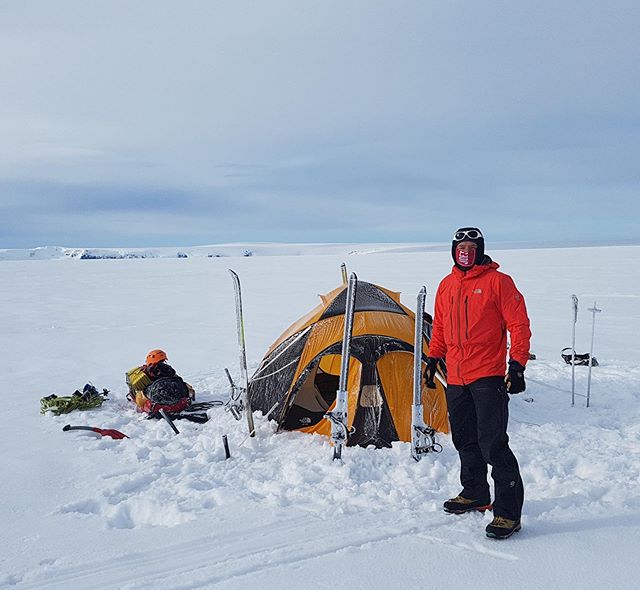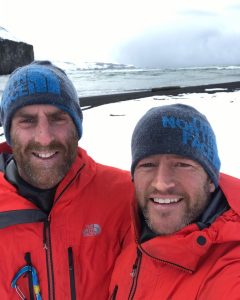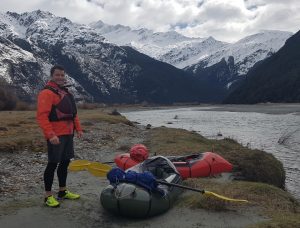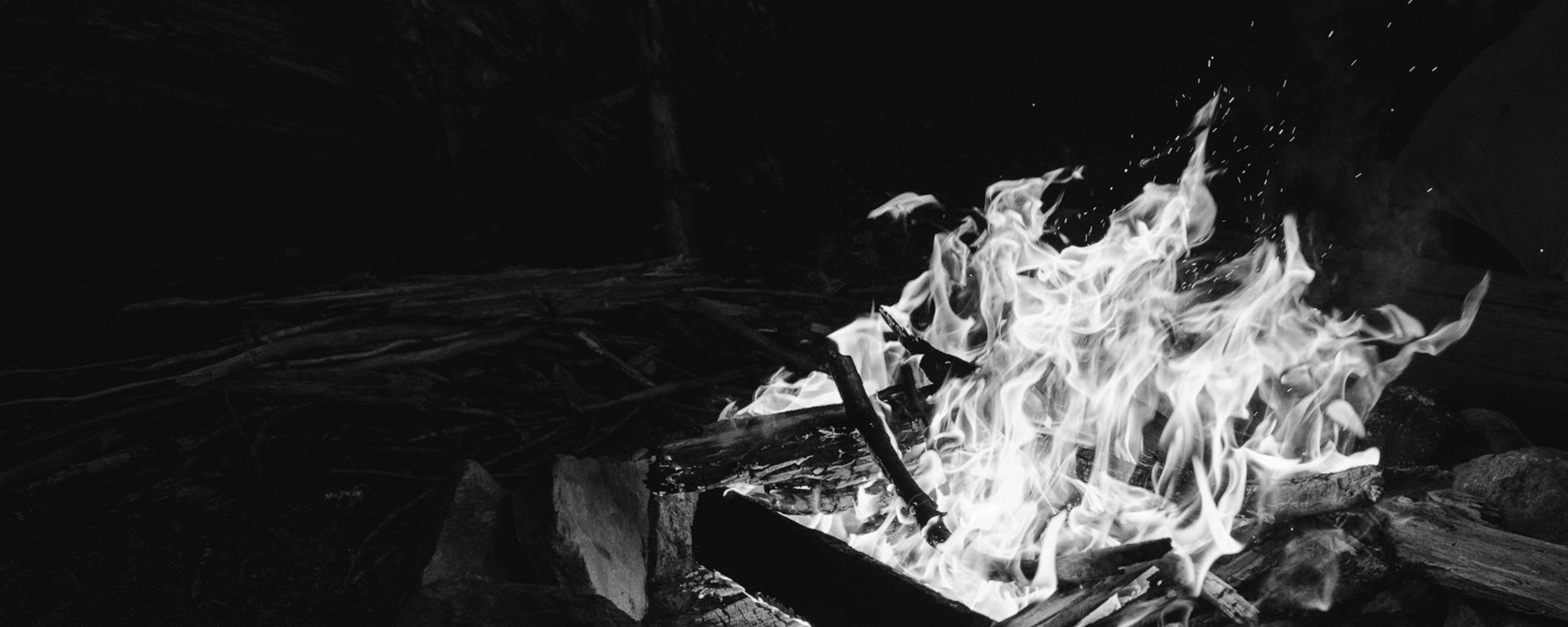
31 Jul What’s left to explore?
The River Of The Trembling Spirit
Up Close & Personal With Gareth Andrews…
Adventure is allowing the unexpected to happen to you. Exploration is experiencing what you have not experienced before. How can there be any adventure, any exploration, if you let somebody else above all, a travel bureau arrange everything before-hand?” – Richard Aldington
There seems to be a collective idea that there are no places left to explore on earth anymore. At Joe’s basecamp, we say Bollocks. There is also a perception that modern-day explorers are on the covers of magazines, famous somebodies with sepia coloured portraits, weather-worn faces and an ice axe in hand. Bollocks again. I just met a modern-day explorer at Joe’s Basecamp.
I sat on Joe’s old brown leather Chesterfield across from him, as he told me in a soft barratone voice of the challenges he faced, as he and his expedition partner made their way across Iceland. A never-been-done-before unsupported traverse, with a foray down the aptly named “River of the Trembling Spirit”.
His name is Gareth Andrews. He does not have a sepia promo pic or thin yellow border around his portrait. He lives in Sydney, has a full-time job and a growing family and is categorised “In a smaller band of people who are explorers” [- Joe Bonington]. Let me tell you a little about our chat.

Gareth got back two weeks ago. He and Richard Stephenson (his expedition partner) have just spent three weeks pack rafting, climbing, hiking and squelching through uncharted areas of Iceland, drawing a line from south to north, going through parts that “Not even the vikings went through, because it was so barren”. I mean the obvious question is why? Gareth states that he wanted to go to the country and see it in its wildest form. He wanted to find something that has not been done before and showcase Iceland in it’s breadth.
“When you do a crossing of a country, especially via a glacier, you have the classic glacier travel: epic ice sheets, then the transition to the highlands; dark and desolate with volcanoes, then into the wetlands with birdlife… I really love the connection with landscape, that’s why I like these crossings, you become immersed in a place.”
When asked about how he conjures such adventure firsts, he answered “I think of places I want to go, what journey it might be, what I want to do, then try to find someone to do it with.”
The ‘person to do it with’ holds quite the criteria, they must be “Kind, thoughtful, respectful. Hard, fit, and experienced. You get a lot of gnarly adventurers, but you might not want to spend any time in a tent with them”.
This shared experience is a large part of why Gareth explores. I got a sense that the increased safety margin was one of the factors in having a partner on such trips. Throughout our conversation, Gareth spoke of decisions and actions which all involved the consideration of safety. I suppose this is what makes an incredible explorer. Someone who is sufficient within wild places, is traveling into the unknown, but pragmatically considers risk and has a decision tree in minds eye to take actions that will leave the team in a position to return home in one piece.
After our formal chat had ended, he joked that you have to lose an arm to write a novel worth reading, but it’s the modern day explorer, who comes home safely to his family, and life in Sydney, that is worth hearing.
I asked about stepping into the unknown of Iceland. For Gareth, the surprise and unknown is the whole thing,
“In this trip there were so many unknowns. Not knowing how easy it was to find the source of the river, the canons, the waterfalls, it was all really scary. We didn’t know what the source of the river was going to look like. We’d picked a point [the potential river source], spoke to a glaciologist, and without really knowing, went for it.”

It wasn’t all without a plan, the trip had been mapped out and revised again and again until the final route was chosen. Gareth and Richard started on an ice beach on the south coast of Iceland. The team approached the base of the Breiðamerkurjökull glacier via packraft across a lagoon. They ascended the Breiðamerkurjökull to reach the Vatnajökull glacier. Ski touring northwest between mountain ranges, passing subglacial volcanoes and descending off the Vatnajökull via a glacial tongue, they reached the source of the Skjálfandafljót river. The River of the Trembling Spirit.
Gareth recalled a moment when the journey was unfolding, when no planned itinerary could prepare them. Risk assessments and google earth mapping aside, this was discovering the landscape as they went through it.
“The river changed character so quickly. We had stopped, had some food, we’d felt in control. We got back in our boats, and the river swung around a corner. It funnelled into a gorge, the ice walls on either side of us got higher, the river got quicker and we heard a meat grinder roar. We realised that it was rapids. Somehow we managed to find a sliver of sand, paddled over and stowed our boats, climbed up the snow wall, through a canon, and saw the rapids further down. Looking at it we scared the shit out of ourselves. At the start of the trip, we had a ‘no paddling in rapids policy’, but it happened so quickly. The first two encounters with the river were really sketchy, and made us really worried.”
I wondered if the forbidding landscape, with it’s Norse mythology of roaming trouble makers of Odin, Thor and Loki held any weight during the trip. Gareth compared his other expeditions, to places like Greenland and the magnetic north pole, where he’d had a sense of belonging and connection to the landscape he was travelling though. In Iceland? He didn’t find that connection.
“At any point in time I never felt really safe. There were a couple of nights where I did not really sleep [because] I was worrying about the next day.”
He speaks of a surreal experience;
“We had to walk around subglacial volcanic lakes under the ice sheet. It was like a vortex, the land just falls away into a hole. Beyond the hole you can see the start of the crevasse field and the sleds start to be magnetically drawn into the lakes. We’d seen them on the map, but didn’t really know what they were. The air around smells like sulfur, it’s so bizarre as you’re in the middle of an ice sheet. It was so exciting thinking it’s just us looking at them. Not many people get to that part of the world.”
He goes on to recount the sinister feeling of the weather, as it followed their journey:
“It felt spooky. We read a lot about where we are going, and Vatnajökull, the remotest points of iceland, even the Vikings wouldn’t travel there as their horses would get exhausted and die. There are legends about the area, it’s haunted, with lots of ghost stories. At every stage of the trip the weather had a malevolent edge to it. The last five days of the trip the weather was chasing us down to the sea. Huge blizzards came in, and every day we would walk or paddle below the snow line, then where would dump [snow] in the night. The last day we had to paddle 25 km. It was a blue bird day, we thought we were going to smash it. The weather changed just like that, and we saw massive squalls coming towards us. We had a huge cliff on our left, some coastal volcanos to our right, and everything disappeared into a wall of grey. The snow came, and we were getting smashed. Then it just stopped. We only got a 10 minute reprieve and every ten minutes we would get smashed again. It lasted the whole way until the last 1km of the beach, our final stretch. The sun came out, the weather cleared, and a seal popped up and swam with us.”
The seal may have been Loki coming out to smile at his own mischief.
I wondered what Gareth’s schedule was like. How does he fit this all in with a wife, a two year old, studying and being an Anesthetist? He says adventuring is a part of who he is, something he has to do which is not work, but takes away from family time. He confessed that it was intrinsically selfish, but argues that this passion makes him happier, more grounded, mentally stable and give him something fun to focus on. “I try as much as possible to try to prioritise the family, I get just the stuff [training] done which needs to get done.” So instead of going for beers after work, having a social game of touch football, or even some recreational sport climbing, he goes to training and after heads home to spend time with his family.
Having an understanding partner is one major factor which allows Gareth to do what he does. I would argue his wife sounds equally incredible and embodies Gareth’s belief that life doesn’t end after you have a baby. She ran an ultra marathon in Patagonia, covering a whole 100km over rough terrain just 10 months after giving birth. I got a feeling they get each other.
“People say ‘enjoy that glass of wine or that weekend away, because you won’t have that anymore’ (referring to after having kids) but kids only make things better.” In fact Gareth insisted that the whole family, including his parents came to Iceland after he and Richard finished the expedition. Gareth wanted them to see what the team had done, and to be involved. His mother smiled at the boys trip saying “This isn’t surprising. When you were born, it was a perfect winter day, the sea ice and waterfalls had totally frozen over.” This poetic birth makes me think that Gareth was placed on earth by the hand of a norse god to explore the frozen reaches of the land. I have an inkling he feels the same way.
Our conversation turned to contemporary exploration. How do you become an explorer in this day and age with images of the ticket line leading to Everest summits and every inch of the globe seemingly been broadcast on google earth? I got a sense from Gareth that being an explorer today means being creative, coming up with original ideas and being open to new means of experiencing the landscape.
“It’s increasingly difficult. There are lots of people out there doing these things. The master plan has always been to get to Antarctica. The Iceland trip was the first one I’d done independently. We’d planned the whole thing from start to finish, whereas the others had been guided. To do a first crossing, a first something, you have to do it under your own steam, then you can be regarded as a stand alone adventurer. As an intrinsic thing I would like to be seen as an adventurer, as an explorer.”
What advice would Gareth impart on someone wanting to have their own adventure?
“Choose something you really want to do, that thing that lights your fire, and then make it a priority. Surround yourself with people who are going to say ‘That’s awesome, you should do it!’ Ignore the naysayers. Work out how to make it happen – go on courses to make sure you can do it, save a little more money, train a little more, speak to people that have done it, or who have done similar things, as they will show you that is possible.
Climbing big mountains, going to the poles, they are big projects in your life. I can still do these adventures while I am a professional and have a family. I think that other people can do the same thing. I am just a normal person, I just prioritise things differently, it is possible.”
Modern day exploration is just as much about managing your home life with your stints on far flung ice beachs. It’s as much about time management and priority setting as it is sled pulling and pack rafting. Modern day exploration is a contemporary practice, with technology allowing route setting via the closely mapped landscape, or email and facetime to organise logistics, gear and then in the next instant work out dinner with your spouse. Exploration is more relevant and important than ever before. Explorers spotlight our natural world and are key custodians to conserve places explored. Thank you Gareth and Richard for being exemplars of Contemporary Explorers and sharing your expedition with us.



No Comments